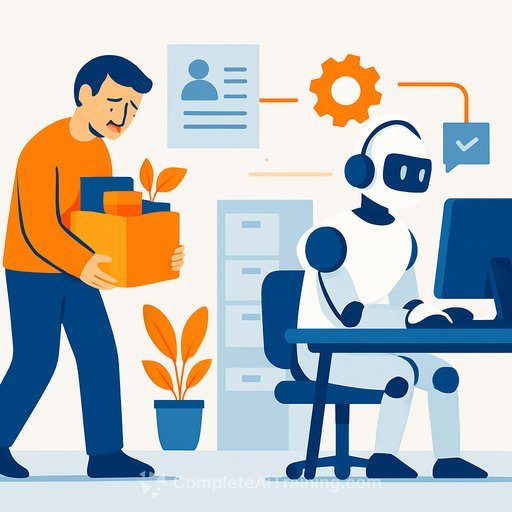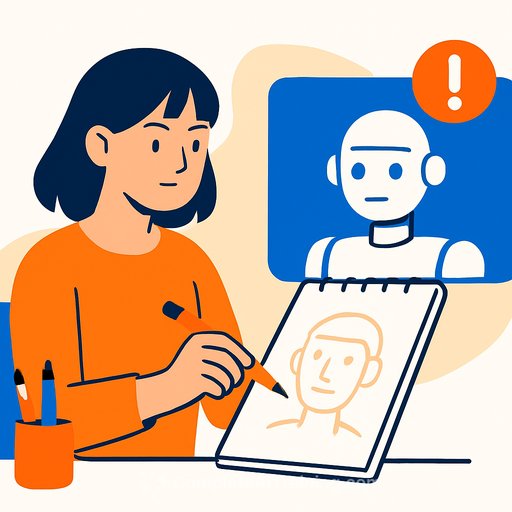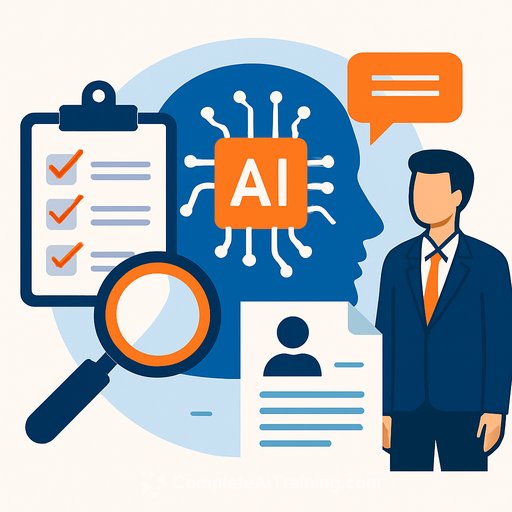Amazon to cut 14,000 corporate roles: What HR needs to do next
Amazon plans to eliminate 14,000 corporate jobs as it reorganizes around AI. The company's HR chief called AI "the most transformative technology we've seen since the internet" and said the business needs "fewer layers and more ownership" to move faster.
This isn't a one-off. Leadership has been signaling for months that AI-led efficiency would shrink some roles while creating others. The direction is clear: leaner orgs, faster decision cycles, and sharper role definitions.
Key details HR should note
- 14,000 corporate roles are being cut, focused on simplifying layers and speeding up execution.
- Amazon says AI is accelerating innovation and pushing the company to organize "more leanly."
- Employees in eliminated roles get 90 days to secure a new position internally, with recruiters prioritizing internal candidates.
- Headcount context: 1.55M total employees globally at the end of Q2; about 350,000 in corporate roles (per reporting cited).
- Return-to-office and relocation policies remain in play, with moves to hubs like Seattle and Virginia.
- Hiring continues in "key strategic areas," even as layers are removed elsewhere.
Industry context
Other large employers are making similar moves. Recent cuts include Target (1,000 roles plus 800 open roles closed), Meta (600), Microsoft (9,000), Paramount Skydance (1,000 to possibly 2,000), and Salesforce (4,000). Outside tech and media, Goldman Sachs is limiting headcount growth due to AI-driven efficiencies.
Translation for HR: broad-based pressure to streamline corporate functions, re-scope roles, and fund AI-driven growth areas.
What this signals for HR leaders
- Org design will tighten: fewer layers, wider spans, more end-to-end ownership.
- Role mix will shift: some legacy tasks shrink; demand rises for product, data, automation, and AI-enabling roles.
- Internal mobility is critical: 90-day windows and internal-first recruiting are now core to talent strategy, not a side program.
- Location strategy matters: hub-based teams and in-office collaboration will influence hiring, promotion, and redeployment.
- Change readiness is a skill: managers need training to redesign work, set new expectations, and measure output cleanly.
Priority actions for HR (next 30-90 days)
- Run a spans-and-layers audit: identify slow decision points and redundant approvals; simplify where value isn't clear.
- Update your job architecture: flag AI-impacted roles, define new responsibilities, and set clear skill expectations by level.
- Activate internal mobility: time-boxed posting windows, simplified application flows, accountable hiring managers, and skill-based matching.
- Launch targeted reskilling: short, role-specific programs in automation, AI-assisted analysis, and prompt-writing for core tools.
- Tighten hiring gates: add a "replace vs. redesign" review for backfills; prioritize moves from at-risk teams.
- Revisit location policies: align role requirements with hub strategy; offer clear relocation timelines and support.
- Equip managers: toolkits for role redesign, performance contracts focused on outputs, and change communication scripts.
- Measure the right things: track cycle time, productivity per FTE, internal fill rate, time-to-productivity after reskilling, and org layers by function.
- Set AI guardrails: define approved tools, data-use rules, QA steps, and auditing for accuracy and bias.
- Plan respectfully for exits: consistent severance, benefits continuity, outplacement support, and compliance across jurisdictions.
How to move talent faster into AI-era roles
Short programs beat sprawling curricula. Aim for 2-6 week upskilling sprints tied to specific workflows: automating reports, summarizing docs, writing better prompts, and QA for AI outputs. Pair training with real projects and a clear path to permanent role changes.
If you need structured options, explore role-based programs and certification paths that align to business outcomes, not theory. Two useful places to start:
- AI courses by job function - quick way to locate training mapped to HR, operations, finance, and more.
- AI automation certification - practical workflows for process owners and analysts.
Communication framing that lands
- State the business need plainly: speed, fewer handoffs, clearer ownership.
- Explain how AI changes the work, not just the headcount.
- Commit to internal-first movement with deadlines and support, then report progress.
- Share what will still be valued: judgment, customer insight, problem framing, and accountability.
Bottom line
AI is changing how corporate work gets done, and companies are reorganizing to match. The HR play is to simplify structure, move people into higher-value roles quickly, and train managers to lead through change without wasting time or trust.
If you make internal mobility real and keep training close to the work, you protect capability while you get leaner. That's the balance to aim for now.
Your membership also unlocks:






